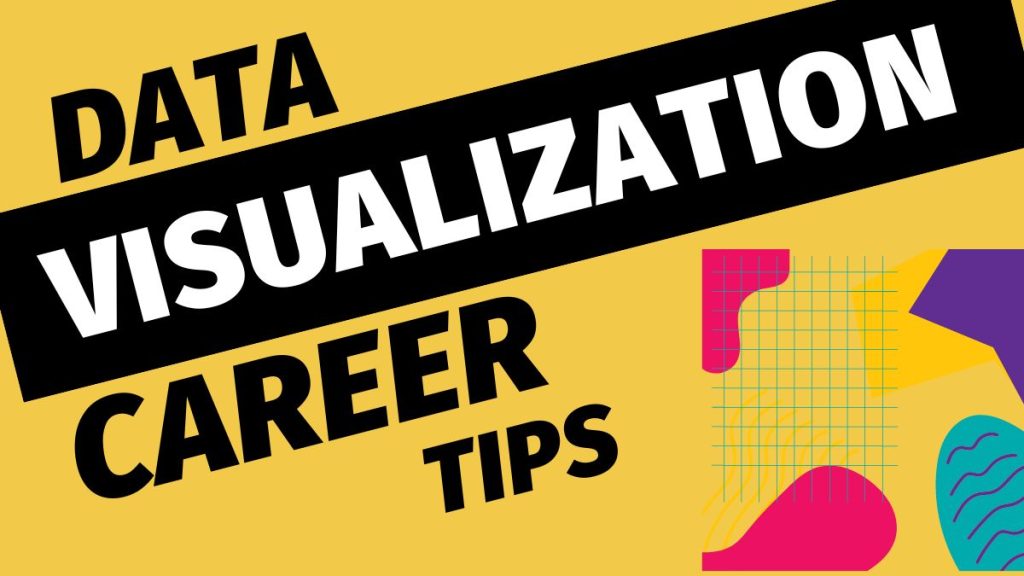Tips For Pursuing a Career in Data Visualization

Data Visualization Career Tips
Pursuing a career in data visualization can be a daunting task. But with the right guidance, it can be a rewarding experience. This step-by-step guide will provide you with all the information you need to pursue a career in data visualization and help you build a successful foundation for your future.
Understand the Basics of Data Visualization
Data visualization is the process of transforming data into visual formats to support analysis and decision-making. This process allows you to illustrate data in a way that is easy to understand and communicate, regardless of the complexity or volume of data available.

If you’re interested in a data visualization career, it’s commonly used in sectors such as business intelligence, operations research, and scientific research. But you can also apply data visualization to industries like health and medical, marketing, retail, and many others.
Data visualization can be achieved through a variety of visualization tools and techniques. For instance, you can use it to analyze user data, track performance, forecast future trends, and identify issues within various systems. If done correctly, data visualization allows people to explore data visually, identify patterns, and make informed decisions based on that data.
Develop the Right Skills and Education
To pursue a career in data visualization, you’ll need to develop the right skills and obtain the necessary education. While there are no specific degrees that are dedicated to data visualization, there are a variety of relevant fields from which you can choose. But as a data science specialization, it’s common to work with a team of other data science professionals.
Some of the most popular fields from which you can transition into data visualization include computer science, design, or business analytics.
Get Certified
Getting certified in data visualization requires a combination of formal education, hands-on experience, and professional certifications. To start, you should develop a strong foundation in the basic principles of data visualization. This could include taking classes at a college or university, studying online courses, or completing self-study materials.

Once you have a good understanding of the fundamentals, you should begin to develop your skills by practicing with various tools and techniques. You can do this through online tools like Tableau Public or Plotly to get feedback from experienced practitioners.
Finally, you should consider pursuing professional certifications. These certifications will demonstrate your expertise and give you an edge when applying for jobs or promotions. In order to pass the certification exams, you should have a thorough understanding of the technical aspects of data visualization.
Understand the Types of Data Visualization Tools
Data visualization involves selecting the right format that best communicates the data and displays it in an easy-to-understand manner. Once you have gathered and analyzed your data, you can work with one of these tools to visualize it.
Here are some of the most common data visualization software:
This is just the tip of the iceberg so don’t stop here. There are several different software like these 10 data visualization tools that you can use to create visual representations of data. Each one has its advantages and disadvantages.
Get Experience and Training
Once you have completed your education and have the necessary skills to pursue a career in data visualization, you will need to get experience and training in data visualization. There are a variety of ways that you can get experience in this field and help you build a strong foundation for your future.
Don’t give up on your dream
If you are trying to learn data visualization and feeling like giving up, it is important to remember that there will always be hurdles to overcome in any learning process. Learning data visualization can be difficult and time-consuming. But with the right mindset and dedication, it is possible to achieve success.

Learning data visualization can seem overwhelming, especially if you’re starting from scratch. Instead of focusing on the entire task, break it down into smaller goals that are more manageable and easier to accomplish.
Don’t be afraid to ask for help. It’s okay to reach out to others for help and advice. There are many resources available online, such as forums and tutorials, which can be very helpful in understanding data visualization.
Make sure to practice and experiment. Try out the Excel visualization tools, if you have them available. Data visualization is a skill that needs to be practiced often in order to get better at it. Experiment with different tools, techniques, and approaches and find out what works best for you.
Prepare for the Job Market
Once you have the necessary skills and experience to pursue a career in data visualization, you will need to prepare for the job market. Getting your name out there and marketing yourself to companies and organizations that are hiring data visualization professionals is the first step toward achieving your goal.
Conclusion
Data visualization is an increasingly popular field that requires an understanding of data analysis, design, and software development. It is the process of creating visual representations of data to make it easier to understand, explore, and present complex information.
From getting the right education to finding the right job opportunities, this guide will walk you through each step of the process. With the right guidance and dedication, you will be able to achieve your goals and make your dreams of a rewarding data visualization career a reality.

Related Data Visualization
How to Create a Bar Chart in Excel
Tips For Pursuing a Career in Data Visualization
What is Data Visualization and Why Do We Need It?
Scatterplots vs Bubble Graphs: What’s the Difference?
Data Storytelling: Where Does Data Fit In? A Beginner’s Guide
Excel Data Visualization: 20 Charts, Graphs, and Plots To Master
A Comprehensive Guide to Paving a Career in Data Visualization
10 Best Data Visualization Tools and Software For Your Business